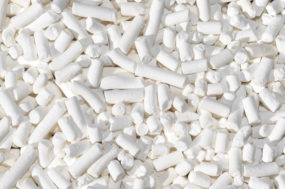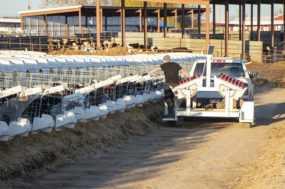Doing more with less. For dairy producers facing tough market conditions, this adage rings more true now than ever. You are constantly looking for ways to be sustainable while keeping both your herd and bottom line healthy.
In my work with dairy producers, I meet one-on-one to evaluate rations and grouping strategies and to identify opportunities for improved efficiencies. Often, the solution to greater profit potential relates to the ration.
Focus on the key ingredient
Feed costs can be up to 65 percent of your dairy’s budget, and corn silage can be the largest ingredient and influencer in the ration. When I meet with producers, I like to explore the farm’s income over feed cost (IOFC) and use it as a key indicator of productivity. If your IOFC is low, it’s time to evaluate your ration and find ways to be more profitable.
In reviewing profit potential, I encourage investigating the option of using hybrids bred exclusively for corn silage, such as a brown midrib (bm3 BMR) hybrid, which has up to 40 percent less lignin.
Rations built with low-lignin corn silage are more feed efficient because of improved fiber digestibility. With less lignin, rumen microbes digest the forage fiber more thoroughly and, with a faster rate of passage, more room is left for increased dry matter intake, leading to higher production per cow per day.
Let’s take two ration examples (Tables 1 and 2) and compare the economics (Table 3).
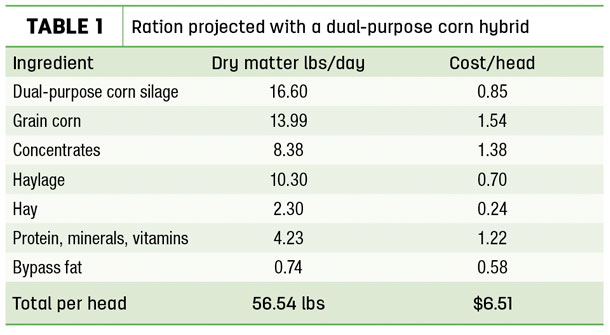
The following rations were based on actual forage analyses and spring 2017 feed prices in the Northeast with a goal of 100 pounds of milk per cow per day.
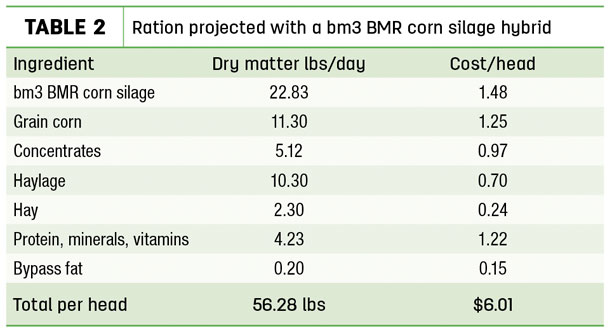
Milk prices were calculated at $17.35 per hundredweight.
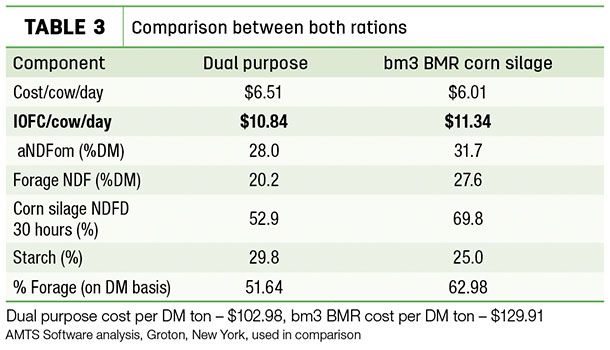
As indicated in the tables, the ration including a bm3 BMR corn silage hybrid requires less concentrates to meet the goal of a balanced profitable ration. Those lowered costs, as well as the increased amount of forage neutral detergent fiber, contribute the higher IOFC.
Keep in mind the importance of a well-balanced ration. Digestible fiber is important, but so is starch. Too much or too little of either can cause complications in your herd and lead to missed profit opportunities.
Watch the manure
Your cows will show the signs of an inefficient ration. If feed lacks sufficient effective fiber, it passes through the rumen too quickly. The result is loose, inconsistent manure. You can check manure a couple of ways to analyze your quality of silage.
I recommend a manure screening to find signs of inadequate grain processing or poor digestion. Sending samples for fecal testing is another option that provides a clearer picture of the amount of fiber and starch in the diet.
Find solutions on your farm
Here are considerations to do more with less on the farm.
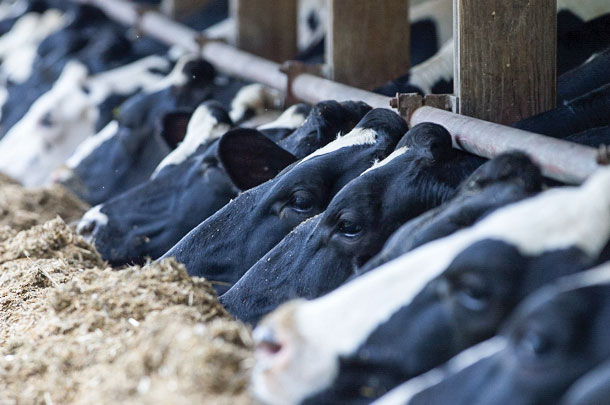
Feed homegrown forages – This tactic is extremely beneficial to your farm. Reducing the amount of imported nutrients and cutting those extra expenses can improve your profit margin.
Evaluate your herd – In today’s market, each animal needs to pull its weight. Start by checking milk records and determining if all your cows are performing economically. Consider seeking new grouping and feeding strategies or culling to find areas of improvement.
Track your IOFC – With the fluctuating market and commodity prices, my team and I recommend re-evaluating your IOFC monthly to keep an eye on your profits. Determining your IOFC is simple and is measured in the amount of dollars spent on each cow per day. Follow this equation:
(milk price per hundredweight / 100 x
X pounds milk per cow per day) - feed
cost per cow per day = IOFC
For example:
($0.1535 X 90 pounds milk per cow per day) - $5.50 feed cost per cow per day = IOFC; $13.82 - $5.50 = $8.32 IOFC
- For the most accurate result, include your component compensation and total feed costs (e.g., corn silage, hay, grain and supplements).
Test your corn silage – Team up with your preferred lab to test your corn silage and other forages throughout the year. Taking this initiative for in vitro forage testing keeps you informed about the level of neutral detergent fiber digestibility in your ration.
Changes in neutral detergent fiber digestibility and undigested neutral detergent fiber can be utilized in dynamic ration software to project positive steps toward optimizing cow performance.
If market conditions stay on their current course, profit margins will continue to be tight. Be proactive on your farm by consulting with your nutritionist and farm team to be more efficient and get the highest return on the work you put in with your herd. ![]()
PHOTO 1: Using a low-lignin corn for silage could be a good way to increase production and, thus, profit.
PHOTO 2: With help from a nutritionist, you can create a ration to keep your herd and your finances in good shape. Courtesy photos.

-
John Anderson
- Nutritionist
- Mycogen Seeds
- Email John Anderson




